2010 marked the beginning of a new decade, and for many teams a period of transition. In the last two years, the number of players from the 1990s who have survived in world cricket has reduced to a mere 11, who can actually form a team if required! A match between the players of the 90s and 2000s would not be a bad idea after all for the ICC. Though all jokes apart, 2011 has given some hope especially to Test cricket with debutants having a gala time and promising enough to have long careers ahead of them. But here are those handful of players who have somehow survived in the last 15 years at the most, and their futures in cricket –
Rahul Dravid
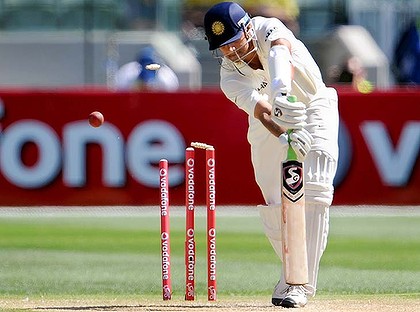
‘The Wall’ needs no introduction as such as he remains the senior statesman of the Indian side after fifteen and a half years of international cricket. The Bangalorean has made the country proud on the international stage with mainly three of his qualities – His impeccable behaviour on the field, his selflessness to play for India first and then himself and lastly his oratory skills which were highlighted in the recent Bradman Oration in Australia.
Since his debut at Lords in 1996 where he was unfortunate to have missed out on a ton, Dravid is the man India have relied on to fire every time, especially if Tendulkar fails.
No wonder then that he is one of the rare batsmen to have scored more than 10,000 runs in ODIS and Tests and has the highest number of catches in Test cricket at the moment. Although he did face a slump of form from 2008 to 2010, he has come back strongly in 2011 being the highest run-getter in Tests.
Dravid though will turn 39 in a few days time and age is not on his side. I see him playing at the most till the 2013-14 season, considering how susceptible he could be to injuries with a grueling IPL to contend with, as the newly-appointed skipper of the Rajasthan Royals and for India, he will have to be on the field frequently than relax at home as the national team will be dealing with a hectic schedule in 2012 too, with the number of Tests not getting any lesser.
Fortunately for Indian fans, Dravid has retired from ODIS and T-20s for India to prolong his Test career, a format he is the most effective in. Unfortunately though, he could be the last of the generation of evergreen and classical batsmen produced in cricket the day he calls it quits in international cricket altogether.
VVS Laxman
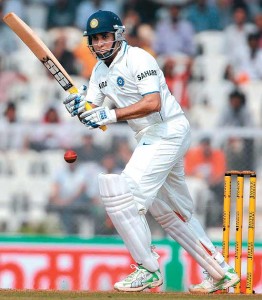
The ‘Very Very Special’ Laxman is the second Indian on this list and like Dravid, now an only Test player. The 37 year old Hyderabadi made his Test debut a few months after Dravid and though he struggled for the first five years of his career, he did not lose faith in his abilities as he went back to domestic cricket and improved his batting drastically. His talent was first spotted when he hit a classy 167 against a powerful Australian bowling attack at Sydney in January 2000. This was a prelude to his rise in international cricket as he turned to be the catalyst in reducing Australia’s dominance with time.
His 281 at Kolkata in 2001 against the Aussies was one of the greatest Test innings of all time and was critical in India winning that Test series and saved the faces of Sourav Ganguly as captain and John Wright as coach. The duo went on to change Indian cricket to make it a superpower that it is today. Laxman will be remembered the most though, for his scintillating record against Australia and the fact that he has helped India win more Tests than Dravid and Tendulkar, especially those played away from home.
The question remains that how long can Laxman continue to score heavily for India. Unlike Dravid, Laxman’s fitness has always been under the scanner and it will hasten the BCCI to perhaps take a tough stance on him in the near future. He too will be a part of the IPL and it will not be a surprise to see him call it a day in the next 12 months or so.
Harbhajan Singh
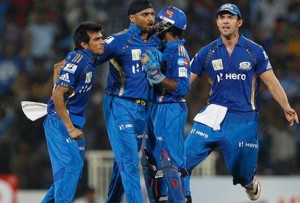
The ‘Turbanator’ also loves to play the Kangaroos as Laxman. He made his Test debut against them in 1998 in Bangalore in the final Test of the home series and his ODI debut in Sharjah a few months later against the Kiwis. He was not an instant success for the national side having made appearance in a few matches and the Jalandhar tweaker was reprimanded by the National Cricket Academy for his bowling action.
In that background, it was an outstanding comeback which Harbhajan made in 2001 where he repaid the faith Sourav Ganguly had in him, by bagging 32 wickets in 3 Tests against Australia at home. Ever since, his bowling has been vital in helping India maintain their home dominance as well as winning crucial away Tests.
For a majority of his career, he had been under the shadow of Anil Kumble in Tests. As a result when he retired in late 2008, Bhajji had to take up the role of the senior most spinner in the side and the bowling spearhead of the team, in the absence of Zaheer Khan if he was injured. This is where he failed to a huge extent and that is what began his downfall.
Today, Harbhajan finds himself out of the Indian team completely with the likes of R Ashwin and Pragyan Ojha emerging with time. Despite being the only contemporary bowler with above 400 Test wickets to his name, it will not be long before he is forced to call it quits even if he has proven in the past that he is a true fighter like any other Sikh and not to mention, he has a lucrative offer with the Mumbai Indians in the IPL for which he would want to put a full stop on his international career.
Shahid Afridi
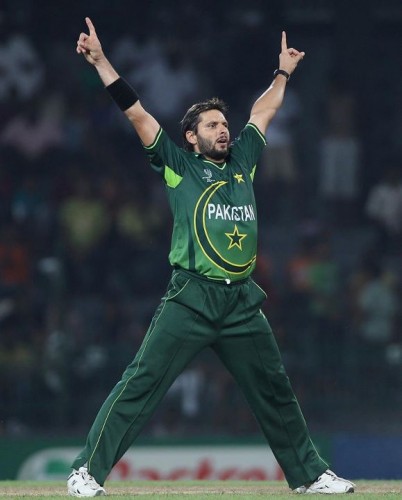
It is amazing to see this man still surviving in international cricket, despite qualifying to be the most inconsistent yet experienced cricketers in the contemporary era. ‘Boom Boom’ Afridi as he is called was born in 1980 in the Khyber agency region of Pakistan and made his international debut at a tender age of 16.
He had shown in his early days that he is a tremendous striker of the cricket ball as he once famously said, “Ball bahar ya main bahar” (The ball goes out or I go out) which pretty much describes his style of batting throughout his career. A 37-ball 102 against Sri Lanka in just the third ODI of his career is a fine example of this, and the knock remains the fastest century ever scored in ODI cricket till date.
One of the finest entertainers the game may have ever seen, Afridi is no stranger to controversy as well whether it is an intense verbal duel with Gautam Gambhir in India in 2007 or the ball-tampering incident in Australia in 2010. Yet, he is the darling of Pakistan cricket with fans still glued onto their TV sets or flocking into stadiums, just to watch Afridi play.
What is impressive though about him no matter what criticism he faces, is the loyalty and commitment he has shown towards playing for Pakistan over the years despite his team members not being supportive in his cause (as also seen in the spot-fixing saga and match-fixing allegations) and the fact that he took up the tough job of being the captain of his team when his team was in turmoil. As captain, he changed the team’s fortunes in the shorter formats of the game which was seen when Pakistan unexpectedly made it to the last four of the World T-20 in 2010 and the World Cup 2011.
Now that he is longer the captain by name, he very much leads the side when it comes to his experience, charisma and his ever-improving all-round abilities. His recent stint for Hampshire was critical in Pakistan winning the ODIS and T-20s against Sri Lanka as Afridi was seen to be playing more maturely than before. And he is likely to enhance his skills further by turning out for Melbourne Renegades in the ongoing Big Bash in Australia. Although he has not had much luck in Test cricket, Pakistan can hope that the 31-year old can continue to serve them in the shorter formats of the game and help them win the World T-20 in Sri Lanka next year for starters and then the 2015 World Cup.
Jacques Kallis
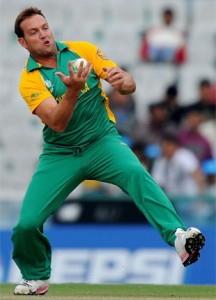
Kallis will definitely go on as the greatest all-rounder to have ever graced the cricket field. His career statistics prove that the man has had the consistency to not just survive, but perform outstandingly in all formats of the game being multi-faceted. Scoring over 12,000 runs in Tests and picking 271 wickets as well as scoring over 11,000 runs in ODIS and picking 267 wickets in ODIs is no mean achievement.
Being a Cape Town boy, Kallis had been bestowed with qualities such as being humble, yet determined in achieving his goals and acquired the cricketing passion in him considering the South African port city’s rich cricketing history. He made his Test and ODI debuts for South Africa in the 1995-96 season against England as a young 21 year old but it was in 1997 when he first made a major impact for his country by hitting a match-saving hundred in the Boxing Day Test at Melbourne.
There was no looking back for Kallis after that. He established himself as South Africa’s mainstay in the batting line-up at the No.3 spot in ODIs and Tests and. As well as the team’s strike bowler and not just the fifth bowler his captain could use him as. There has been no major slump of form for Kallis in his career as yet and that is due to his overall well-being. He is largely responsible for taking South Africa to the top of world cricket in the 2000s as per the rankings.
At the moment, Kallis bats at No.4 in Tests due to the growth of Hashim Amla but he continues to remain an integral part of that batting line-up. He keeps improving time and again as seen with his increasing strike rate, courtesy his IPL stints in the last four years. It is not simple to determine his standby date yet but when it becomes simple, he could be the last of the legends the game has ever seen.
Mark Boucher
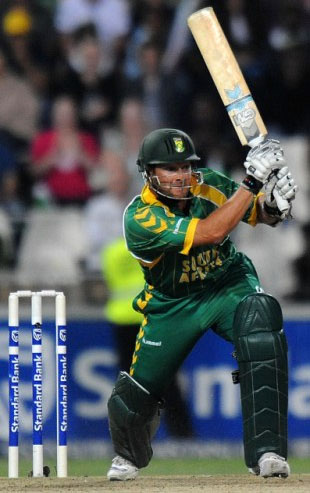
With the retirement of Adam Gilchrist in early 2008, it was Mark Boucher who was the 90s wicketkeeper-batsman to have survived in the 2000s. He took over Gilchrist’s record of the highest number of catches and stumping in Tests so far, which goes to show Boucher’s fitness levels over the years. He is the personification of ‘the actual wicket-keeping technique’ and the last of those keepers who have faced quality and real fast bowling as it is extremely hard to keep wickets to the likes of Allan Donald, Makhaya Ntini, Shaun Pollock and Dale Steyn.
The man from East London played 75 consecutive Tests in a row at a point of time, primarily due to the hard work he put in the practice sessions realizing his shortcomings time and again. That helped his country to a huge extent as his experience has been vital in guiding South Africa to victories not just in Tests, but in ODIs too.
Boucher’s batting has always been circumspect in Tests as well as ODIs at times. However, he has played match-winning innings and one of the most memorable one was the unbeaten fifty against Australia in a world-record run chase at Johannesburg in 2006.
Currently, he is not a part of the ODI and T-20 teams with AB de Villiers keeping wickets. He could return to the fray in a matter of time now that de Villiers is captain of South Africa in ODIs and T-20s. While in Tests, although his age of 35 is creating problems for him, he is likely to play for the next 18 months at the most before South Africa groom young wicketkeeper-batters and finally decide to give them a chance to don national colours.
Daniel Vettori

New Zealand may not have reached the top 2 of the ODI and Test rankings over the years, but they atleast have not been called ‘minnows’ by oppositions. This is due to the efforts of Daniel Vettori, who now has played over 14 years of international cricket. The 33 year old left arm spinner was born in Auckland and has now become one of the world’s best all-rounders, alongside Kallis and Shakib al Hasan of Bangladesh. He belongs to the rare breed of players to have taken above 350 Test wickets and scored above 4000 Test runs and taken 250+ ODI wickets and scored 2000+ ODI runs.
In the first half of his international career, Vettori did not focus much on his batting. However, as the team required more batsmen and all-rounder, he decided to change his playing style. And he did it extremely well and like Afridi, flourished as an all-rounder being captain of the team for a period of time.
After the World Cup 2011, he not only quit as New Zealand captain but also from ODIS and T-20s to prolong his Test career as the team is struggling in Test cricket, sitting pretty at the bottom of the rankings just above Bangladesh. Now he acts as a mentor to the youngsters of the team and aids his successor, Ross Taylor when it comes to leading the side.
In India, he is extremely popular after having turned out for the Delhi Daredevils in the first three years of the IPL and now is the skipper of the Royal Challengers Bangalore. Vettori is likely to play cricket for another four years considering a not-so-busy schedule for New Zealand and only two months of non-stop IPL cricket.
Ricky Ponting
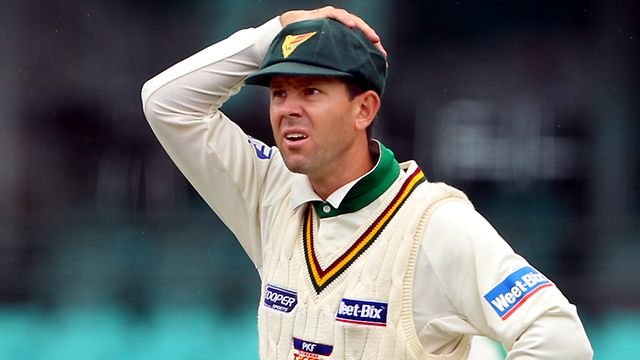
He maybe pragmatic as a batsman and brash as a person, but nobody can underestimate Ponting’s achievements by the time he sees a finish line to his career. The aggressive Tasmanian just recently turned 37, but remains Australia’s No.1 batsman in the current ODI and Test teams and not only the most experienced of all.
Ponting was unlucky to be given out lbw on 95 on his Test debut at Perth against Sri Lanka in 1995. In the initial years of his career, especially in Tests, he had to struggle with his form since he usually batted lower down the order looking at Australia’s batting riches then. However, he learnt the tricks of the trade with every game and is a living example of the fact that ‘There is no substitute to experience’.
He eventually cemented the No.3 spot in the batting order in Tests and ODIs and was at his prime in the 2000s decade as he finished being the highest run-scorer out of all the batsmen in the world. A superstar team did help, but he achieved most of his runs as skipper and that is incredible to watch as not only players can handle the pressure of captaincy and batting at the same time. His innings of 140 in the World Cup final against India in 2003 is one of the best in ODIS till date and helped his team defend the championship.
As captain, Ponting will go down in history as the second captain to win 2 World Cups after Clive Lloyd and the most successful captain in Test cricket of all time. As an individual, he has been a part of a 100 Test victories, a record which could remain immortal. And as a batsman, one of the few players to have scored 10,000 runs in both forms of the game with 69 international centuries to his name, being only second to Tendulkar’s 99 at the moment.
Although since the last two years Ponting has been in a slump in both forms of the game and the fact that his career is hanging by the thread, the day he retires will see a completely new Australian side as he was the only player to represent the team’s past glory in the present. And it will be immensely tough for any Aussie to fill his shoes for years to come.
Mahela Jayawardene
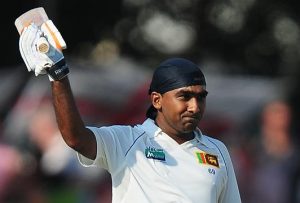
Jayawardene has been Sri Lanka’s architect in terms of scoring runs, especially after the retirement of Aravinda de Silva. The Colombo born right-hand batsman recently joined the likes of Tendulkar, Ponting, Kallis and Dravid to score 10,000 runs in Tests and ODIs and thus established himself as one of the batting greats in the modern game.
He played his first game in Sri Lanka colours in 1997 against India in his hometown. However, it was four years later against the same opposition that he made a name for himself by hitting two centuries in two Tests and followed it with another one against Bangladesh in the next Test he played.
He is the king of playing in home conditions having scored 23 out of his 29 Test hundreds at home, but he will criticized by many in the future as well for failing away from home. In ODIs though the story is different as Jayawardene turned out to be a much capable player after a disastrous 2003 World Cup in South Africa. And perhaps he was inspired by Ponting to enhance his batting when being captain of the team as well as improving his fielding skills. Four years later in the West Indies, Jayawardene led from the front as Sri Lanka made the World Cup final, only to lose to Australia.
Alongside Kumar Sangakkara, it is on Mahela Jayawardene’s shoulders on which Sri Lanka’s fortunes will ride in the short-term. Being one of the seniormost members of the team and an extremely versatile cricketer, it is his responsibility to fulfill Sri Lanka’s dream of winning the World Cup in 2015 after missing out by an inch against India this year in the championship final despite a cracking hundred. And not to mention, leading Sri Lanka to the top 3 of the Test rankings, if not being no.1.
Tillakratne Dilshan

Dilshan will be remembered as the ultimate innovator, the man who first played the ‘Dilscoop’ which is basically guiding the ball over the wicket keepers head off his legs. This had made the 35-year old extremely popular in the cricketing world, but fans might just not get to watch this shot in the long run as his prime is behind him and his inert style of batting is likely to go against him someday.
Although it is unfair to compare Dilshan to Sehwag, yet his batting style is similar to his. He is a smasher of the ball rather than a Wall who wants to keep blocking deliveries. He relies on his hand-eye co-ordination to play shots and loves getting the boundaries rather than the ones and twos. The only impediment to the path of greatness is the fact that he has the same way of playing in all forms of the game which has made oppositions get him out easily in the recent past.
Dilshan, who was born in an unknown Sri Lankan town called Kalutara, made his debut in the 1998 tour of Zimbabwe. He was named Sri Lanka’s captain in all formats after Kumar Sangakkara resigned from the post following the team’s World Cup final loss to India. He justified his selection though as skipper, when he left the Royal Challengers Bangalore halfway in the IPL 2011 to bond with his team for a Test series in England. His efforts have finally paid off recently when Sri Lanka beat South Africa to register their first Test win since July 2010.
His captaincy future is uncertain as he has a tough task ahead, to lead with the bat and on the field and mentor a young Sri Lankan side at the same time as well as contend with seniors such as Sangakkara and Jayawardene. If he is unsuccessful in these endeavors, it could be the end of his career and he too could one day just be seen playing the IPL.
Shivnarine Chanderpaul
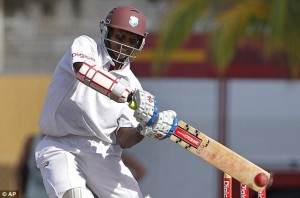
The last but not the least is Shivnarine Chanderpaul. The Caribbean southpaw was born in a village in Guyana but made it big in international cricket courtesy his unconventional V stance while batting. He played his first international match for the West Indies as early as in 1994, being just 20 years of age then but his first Test series was overshadowed by Brian Lara’s record-breaking 375 against England in Antigua.
Chanders has had to play under the influence of Lara for the majority of his career, so he has never got the due he deserves to get from the cricketing world. This is proved by the fact that he averages 49.28 in Tests and 41.60 in ODIS, showing his consistency with the bat over a period of 17 years for a West Indies who has ironically now being accustomed to losing time and again.
His stint as captain for the national side at a point of time was disastrous but somehow Chanderpaul was able to acquire his focus towards his batting and atleast attempt to avoid embarrassing defeats for the Windies. What Chanderpaul will be remembered for though, is not just his V stance but also his match-winning hundred against Australia at Antigua helping West Indies pull off a world-record chase of 418 in 2003 and the record still is intact.
With West Indies not playing much of international cricket, Chanderpaul might play for the next three years as the captain of the batting ship alongside the prodigy Darren Bravo.

Leave a Reply